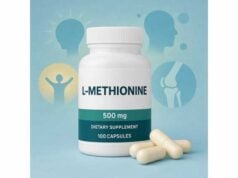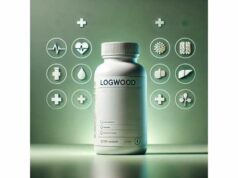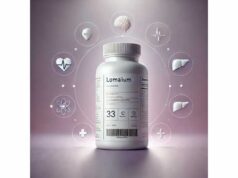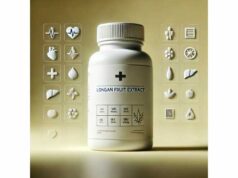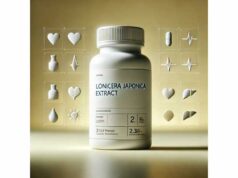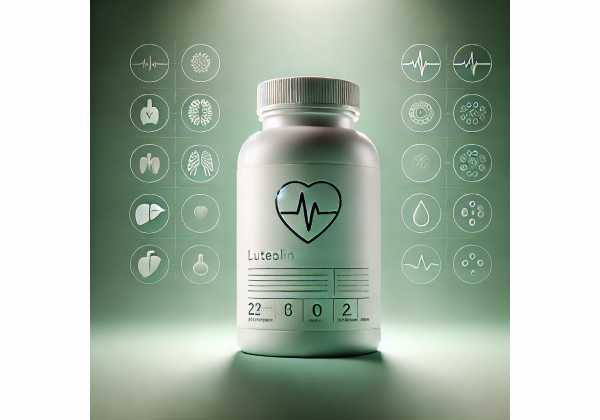
Luteolin is a naturally occurring flavonoid found in foods like celery, parsley, thyme, green peppers, and chamomile. Over the last decade, it has drawn interest for its broad anti-inflammatory, antioxidant, and mast-cell–stabilizing actions. Early clinical trials and many preclinical studies suggest potential roles in calming allergic responses, supporting brain health under stress, and easing neuroinflammation. In supplements, luteolin typically appears as the free aglycone or in enhanced-absorption formats (liposomal, phytosome) and sometimes paired with palmitoylethanolamide (PEA) to target neuroinflammation. While promising, luteolin is not a cure-all. Benefits depend on dose, formulation, and consistent use, and human evidence varies by condition. This guide translates the science into practical, people-first advice: what luteolin is, how it works, who it may help, how to take it, and how to avoid common mistakes. You will also find an honest safety review and a concise evidence summary to help you discuss luteolin with your clinician and decide if it fits your goals.
Quick Overview
- Helps moderate inflammation and mast-cell activation; may reduce allergy-type symptoms.
- Early human data suggest neuroinflammation support when combined with palmitoylethanolamide.
- Typical supplemental range: 100–300 mg/day; consider enhanced-absorption forms with meals.
- Avoid during pregnancy or breastfeeding and use caution with blood thinners or multiple medications.
- People with ragweed/chamomile sensitivity or significant liver disease should consult a clinician before use.
Table of Contents
- What is luteolin and how does it work?
- What benefits does luteolin offer?
- How to use luteolin day to day
- Dosage and timing: how much and when?
- Safety, interactions, and who should avoid it
- Evidence at a glance: what studies show
What is luteolin and how does it work?
Luteolin is a flavone—a member of the flavonoid family of plant compounds—found in many culinary herbs and vegetables. In plants, it helps defend against oxidative stress. In humans, luteolin’s appeal stems from three overlapping actions:
- Anti-inflammatory signaling: Luteolin down-modulates pro-inflammatory pathways (for example, NF-κB and MAPK cascades) that ordinarily amplify cytokines like TNF-α, IL-6, and IL-1β. By muting these switches, luteolin can lower the cellular “volume” on inflammation triggered by allergens, infections, toxins, or mechanical stress.
- Antioxidant and redox-balancing effects: Luteolin scavenges reactive oxygen species and supports endogenous defenses such as superoxide dismutase and glutathione systems. Rather than simply “mopping up” free radicals, it tends to rebalance redox signaling so cells can recover from stress.
- Mast-cell stabilization and microglia calming: Mast cells drive many allergy-type symptoms (itching, flushing, congestion) by releasing histamine, leukotrienes, and proteases. Microglia are the brain’s immune sentinels. Luteolin’s ability to stabilize mast cells and temper microglia activation explains its interest in allergic conditions and neuroinflammation.
Beyond these core actions, luteolin also shows kinase-targeted effects that can influence angiogenesis, apoptosis, and cellular housekeeping (autophagy). These mechanisms underpin exploratory work in oncology and metabolic health, though such uses remain investigational in humans.
Where luteolin comes from:
Dietary sources include parsley, celery leaves, thyme, oregano, green peppers, endive, and chamomile tea. Food forms are mainly glycosides (bound to sugars), which can be hydrolyzed during digestion to the aglycone (free luteolin) that’s absorbed and then conjugated in the liver (glucuronidation, sulfation).
Absorption basics:
Free luteolin has modest oral bioavailability. Advanced delivery formats—phytosome, liposomal, and micronized—aim to improve absorption and maintain useful blood levels. Pairing luteolin with PEA (palmitoylethanolamide) is common in neuroinflammation formulas; PEA engages endocannabinoid-related pathways while luteolin addresses oxidative and mast-cell axes.
Bottom line: Luteolin is best viewed as a multi-pathway modulator rather than a single-target agent. Its broad, gentle signal-tuning makes it attractive for conditions driven by immune over-activation, allergies, or neuroinflammation, provided dosing and formulation are appropriate.
What benefits does luteolin offer?
Allergy-type symptoms and histamine intolerance
Because luteolin stabilizes mast cells and moderates histamine release, many users notice less nasal congestion, itching, or flushing during high-pollen seasons or after trigger foods. While direct head-to-head trials versus antihistamines are lacking, luteolin’s multifactor approach—addressing both release (mast cells) and downstream signaling—can complement medical care, especially in people who prefer non-sedating options.
Neuroinflammation and cognitive resilience
Neuroinflammation contributes to brain fog, sensory sensitivity, and slowed information processing after infections, concussion, or chronic immune activation. By calming microglia and improving redox tone, luteolin may support clearer thinking and steadier mood under inflammatory stress. In practice, people often report fewer “flares” of fog during demanding days when they take luteolin consistently. Several clinical studies have evaluated PEA-luteolin combinations for olfactory recovery or neuroinflammatory symptom clusters, with encouraging results. These findings point to a role for luteolin-containing protocols when neuroinflammation is suspected.
Skin reactivity and eczema-prone states
Topical and oral flavonoids can help temper inflammatory signaling in the skin. Luteolin’s mast-cell effects make it a candidate for soothing reactive skin from the inside out. When paired with a gentle emollient routine, adequate hydration, and trigger management, many users describe steadier skin comfort during weather shifts or high-stress periods.
Exercise recovery and metabolic health (emerging)
Oxidative stress spikes after hard training can hamper recovery. Luteolin’s redox support may ease next-day soreness and support mitochondrial signaling. Animal and cell studies also indicate potential benefits for insulin sensitivity and lipid handling, but comprehensive human trials are still limited. Consider these hypothesis-generating rather than established.
Oncology research (investigational)
In the lab, luteolin interferes with multiple survival pathways in tumor cells and can sensitize them to standard treatments. This mechanistic breadth is intriguing, yet clinical application is not established; anyone under oncology care should only consider luteolin with explicit approval from their medical team to avoid unintended interactions.
Who seems to benefit in real-world use?
- Adults with seasonal or environmental reactivity who want adjunct support for symptom control.
- Individuals with post-infectious brain fog seeking a structured anti-inflammatory protocol under clinician guidance.
- People with frequent histamine-like reactions to foods who are already working on diet, sleep, and gut health.
Expectation setting: Luteolin is not typically a “take it once and feel it” supplement. Benefits accrue with daily use over 2–8 weeks, especially for neuroinflammation targets. Track symptoms to judge whether it is making a meaningful difference for you.
How to use luteolin day to day
Pick the right format
- Aglycone capsule/tablet (standard): Suitable for most; pair with meals that include some fat to aid absorption.
- Phytosome or liposomal: Designed for better uptake; often useful at the lower end of the dose range.
- Micronized or co-ultramicronized blends: Smaller particle sizes can improve dispersion and absorption.
- PEA-luteolin combinations: Common for neuroinflammation protocols. The PEA portion typically ranges 600–800 mg per dose; the luteolin portion often falls between 50–100 mg per dose. Follow the product’s specific ratio.
Timing that fits your goals
- Allergy support: Split dosing (morning and evening) helps keep mast-cell stabilization steady across the day.
- Brain fog or cognitive strain: Morning dose with food; optionally add a mid-afternoon dose on heavy days.
- Exercise recovery: Dose within two hours after training alongside protein and healthy fats.
- Sensitive stomach: Always take with food; start low and increase every 3–4 days as tolerated.
Synergistic partners
- PEA (palmitoylethanolamide): Pairs well for neuroinflammation and sensory symptoms.
- Vitamin C and quercetin: Broaden the flavonoid and antioxidant network; many combo products use this trio.
- Magnesium glycinate or taurate: Helpful if muscle tension or sleep quality is part of the picture.
- Omega-3s: Complement membrane signaling and may amplify anti-inflammatory balance.
Lifestyle amplifiers
- Prioritize 7–9 hours of sleep; good sleep magnifies the benefits of any anti-inflammatory protocol.
- Keep hydration up and protein adequate (1.2–1.6 g/kg/day) to support recovery and tissue repair.
- Walk daily sunlight-exposed minutes to align circadian rhythms—especially helpful when targeting brain fog.
Tracking progress
Use a brief weekly check-in: rate congestion, itching, reactivity after meals, mental clarity, and energy on a 0–10 scale. Look for trends, not single-day swings. If you do not see movement after 6–8 weeks of consistent use at an appropriate dose, reassess fit and explore other drivers with your clinician.
Travel and storage
Keep luteolin away from high heat and humidity. For liquid liposomal forms, follow the label’s refrigeration guidance. Pack your doses in a small pill case when traveling to maintain consistency.
Dosage and timing: how much and when?
General adult supplemental range
- Standard monotherapy: 100–300 mg/day of luteolin (aglycone equivalent), taken with meals. Many start at 50 mg once daily for 3–4 days, then advance to 100 mg twice daily if needed.
- Enhanced-absorption forms: Doses at the lower end of the range may suffice (for example, 100–200 mg/day) due to better uptake.
- PEA-luteolin combinations: Follow product-specific ratios. A common structure is 600–800 mg PEA plus 50–100 mg luteolin per dose, taken once or twice daily.
Titration examples
- Allergy-prone adult: Start 50 mg twice daily for one week; increase to 100 mg twice daily during high-pollen months if needed.
- Neuroinflammation focus (with clinician oversight): Begin with PEA-luteolin once daily for 5–7 days; if tolerated, move to twice daily for 8–12 weeks, then reassess and consider taper to once daily.
When to take it
- Take luteolin with food to reduce stomach upset and support absorption.
- If you experience alertness from daytime dosing, avoid late-evening doses. Conversely, if it relaxes you, an evening dose may be welcome.
Special populations
- Older adults: Start at the low end (for example, 50 mg/day) and increase slowly, especially if taking multiple medications.
- Body weight considerations: Heavier individuals may require the mid-to-upper range for effect, but prioritize tolerance and interactions over a strict weight-based formula.
How long until results?
- Allergy reactivity: Often within 1–2 weeks of steady dosing.
- Neuroinflammation symptoms: Allow 4–8 weeks for noticeable changes, especially with complex symptom clusters.
- If you see no benefit by 8 weeks at a well-tolerated dose, pause and reassess with your clinician.
When to cycle off
For seasonal needs, many people cycle luteolin (8–12 weeks on, then off). For longer-term goals, consider periodic 2–4 week breaks every few months to evaluate continued need.
Safety, interactions, and who should avoid it
Common tolerability profile
Luteolin is generally well tolerated. Occasional effects include digestive upset (nausea, loose stools), headache, or light fatigue—most often at higher doses or when taken on an empty stomach. Reducing the dose or taking with food usually resolves these issues.
Potential interactions
- Anticoagulants and antiplatelets: Flavonoids can influence platelet function and hepatic enzymes; combine with caution and medical guidance if you use warfarin, clopidogrel, or similar agents.
- Polypharmacy and liver-metabolized drugs: Luteolin undergoes glucuronidation and may interact with drug-metabolizing enzymes. If you take multiple medications (antihypertensives, statins, antidepressants, antiepileptics), involve your pharmacist or clinician before starting.
- Oncology treatments: Do not add luteolin without your oncology team’s approval. Some flavonoids can alter drug exposure or radiotherapy sensitivity.
Allergy and sensitivity considerations
- If you have ragweed or chamomile sensitivity, use caution: some luteolin-rich botanicals are in the Asteraceae family, and cross-reactivity is possible.
- People with salicylate intolerance sometimes react to high-flavonoid formulas; start low and monitor.
Who should avoid or get specific guidance
- Pregnancy or breastfeeding: Avoid due to limited safety data.
- Children: Only under professional guidance.
- Active liver disease: Discuss with your clinician; consider lower doses and periodic liver-function checks.
- Upcoming surgery: Stop 1–2 weeks before procedures unless your surgical team advises otherwise.
Practical safety tips
- Introduce one new supplement at a time and keep a simple log of dose, timing, and symptoms.
- If you develop rash, breathing difficulty, severe dizziness, or intense gastrointestinal symptoms, stop and seek medical help.
- Re-evaluate continued use every 8–12 weeks and after medication changes.
Evidence at a glance: what studies show
Mechanistic reviews
Comprehensive reviews describe luteolin’s ability to reduce pro-inflammatory cytokines, inhibit key kinases, stabilize mast cells, and support antioxidant defenses. These effects have been documented across immune, neural, and epithelial tissues. Pharmacokinetic analyses highlight rapid conjugation after absorption and the role of delivery systems in improving exposure.
Mast-cell and allergy context
Reviews of dietary factors influencing mast cells repeatedly list luteolin as a stabilizer that lowers mediator release. In practice, this translates into support for people with nasal or skin reactivity, though controlled trials dedicated solely to seasonal allergies are still needed.
Neuroinflammation and clinical signals
Human studies combining palmitoylethanolamide with luteolin (PEA-LUT) have reported improvements in neuroinflammatory symptom clusters, including olfactory recovery after viral illness and glaucoma-related neuroinflammatory markers, compared with controls or baseline. These trials suggest the combination can be useful when guided by a clinician and paired with rehabilitation (such as olfactory training).
Oncology and metabolic research
In laboratory models, luteolin exhibits multi-target antitumor properties—inducing apoptosis, reducing angiogenesis, and sensitizing tumor cells to conventional therapies—while pharmacokinetic work emphasizes delivery challenges and the need for dose-finding human trials. Metabolic and cardiometabolic findings are encouraging preclinically but remain exploratory clinically.
What this means for you
- The strongest real-world applications today are in adjunct support for allergy-type symptoms and protocols targeting neuroinflammation (especially when paired with PEA and rehabilitation strategies).
- For other areas—metabolic health, oncology, or complex chronic conditions—luteolin should be considered experimental and used only with professional oversight.
- Consistency, appropriate dose, and a high-quality, well-absorbed formulation make the most difference in outcomes.
References
- Luteolin for the treatment of human diseases 2024 (Systematic Review)
- Multipronged Anticancer Mechanisms of Luteolin in Human Cancers: An Update 2024 (Systematic Review)
- Effects of Dietary Components and Traditional Chinese Medicine on Mast Cells: A Review 2023 (Systematic Review)
- Luteolin: A Promising Flavonoid with Therapeutic Potential in Neurodegenerative Diseases 2024 (Review)
- Progress, pharmacokinetics and future perspectives of luteolin modulating signaling pathways to exert anticancer effects: A review 2024 (Review)
Disclaimer
This guide is for educational purposes only and is not a substitute for personalized medical advice, diagnosis, or treatment. Always speak with your qualified health professional before starting, stopping, or combining supplements—especially if you are pregnant or breastfeeding, have a medical condition, or take prescription medicines. If you experience concerning symptoms, seek medical care promptly.
If you found this helpful, please consider sharing it on Facebook, X (formerly Twitter), or your favorite platform, and follow us for future evidence-based guides. Your support helps us continue creating clear, trustworthy health content.

